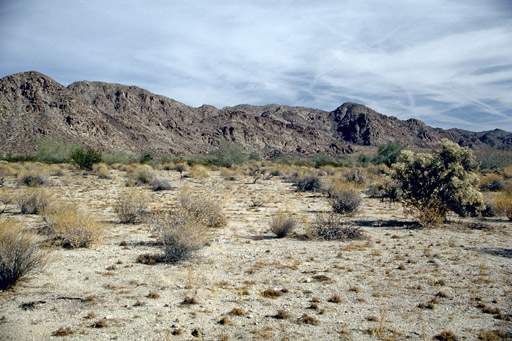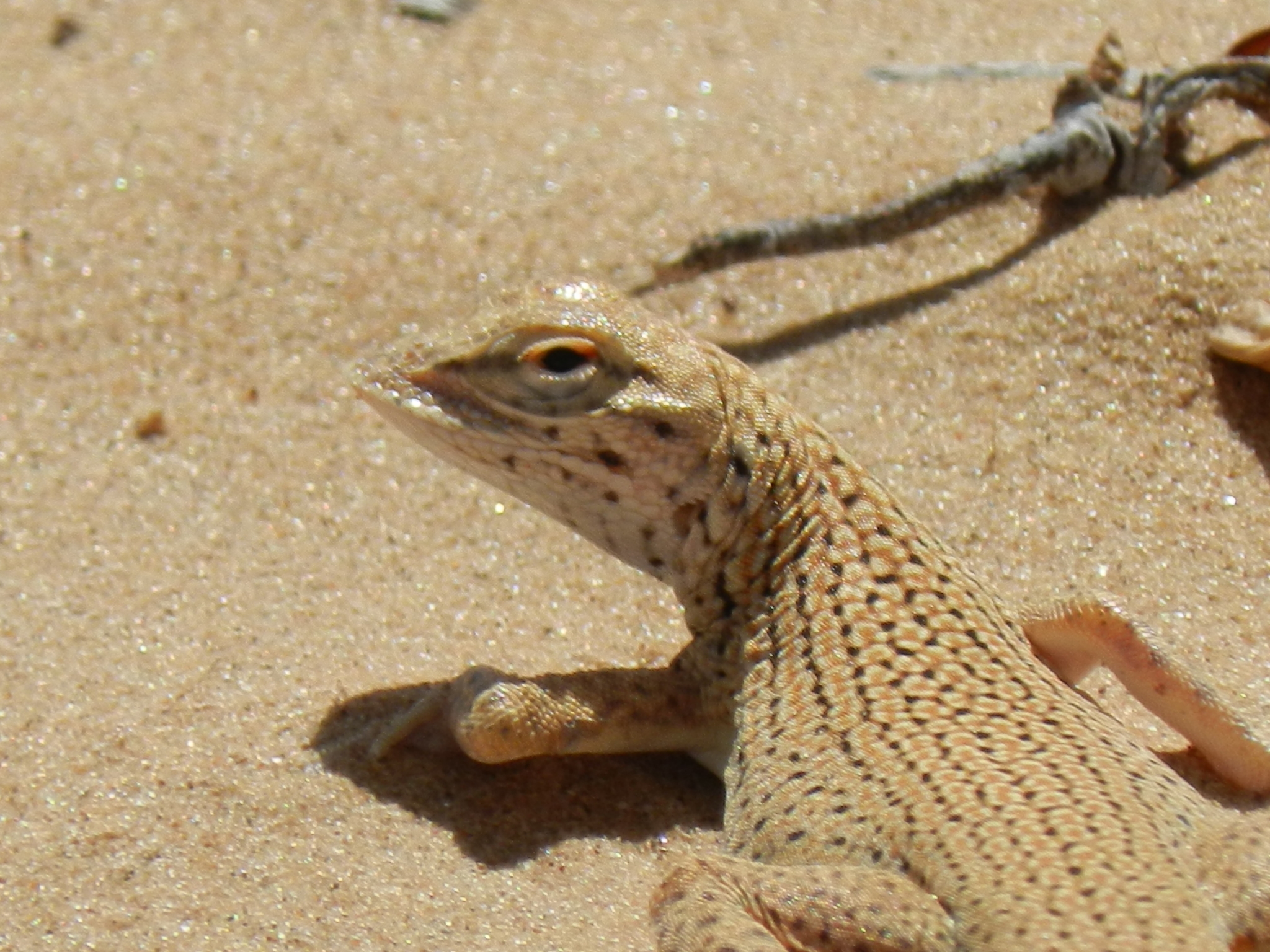|
Uma Notata
The Colorado Desert fringe-toed lizard (''Uma notata'') is a species of medium-sized, Diurnality, diurnal lizard in the family Phrynosomatidae. It is adapted to arid climates and is most commonly found in sand dunes within the Colorado Desert of the United States and Mexico. It was originally described by Baird in 1859 as having a head that was two-fifths the size if the head and body, was a light pea-green spotted with darker green and with a white underside. It can be distinguished from the Mojave fringe-toed lizard and the Coachella Valley fringe-toed lizard by its orange/pinkish stripes on the sides of its underside, while the backs have much similar appearances. The former subspecies ''Uma notata rufopunctata'' has had an unsettled taxonomy, and in 2016 was found to represent a hybrid between ''Uma notata'' and ''Yuman Desert fringe-toed lizard, Uma cowlesi''. Habitat The Colorado Desert fringe-toed lizard (''Uma notata'') occupy the vast windblown sands of the Algodones ... [...More Info...] [...Related Items...] OR: [Wikipedia] [Google] [Baidu] |
Spencer Fullerton Baird
Spencer Fullerton Baird (; February 3, 1823 – August 19, 1887) was an American naturalist, ornithologist, ichthyologist, Herpetology, herpetologist, and museum curator. Baird was the first curator to be named at the Smithsonian Institution. He eventually served as assistant Secretary of the Smithsonian from 1850 to 1878, and as Secretary from 1878 until 1887. He was dedicated to expanding the natural history collections of the Smithsonian which he increased from 6,000 specimens in 1850 to over 2 million by the time of his death. He also served as the U.S. United States Fish Commission, Commissioner of Fish and Fisheries from 1871 to 1887 and published over 1,000 works during his lifetime. Early life and education Spencer Fullerton Baird was born in Reading, Pennsylvania in 1823. His mother was a member of the prominent Philadelphia Biddle family; he was a nephew of Speaker of the Pennsylvania Senate Charles B. Penrose and a first cousin, once removed, of U.S. Senator Boies Penr ... [...More Info...] [...Related Items...] OR: [Wikipedia] [Google] [Baidu] |
Species
A species () is often defined as the largest group of organisms in which any two individuals of the appropriate sexes or mating types can produce fertile offspring, typically by sexual reproduction. It is the basic unit of Taxonomy (biology), classification and a taxonomic rank of an organism, as well as a unit of biodiversity. Other ways of defining species include their karyotype, DNA sequence, morphology (biology), morphology, behaviour, or ecological niche. In addition, palaeontologists use the concept of the chronospecies since fossil reproduction cannot be examined. The most recent rigorous estimate for the total number of species of eukaryotes is between 8 and 8.7 million. About 14% of these had been described by 2011. All species (except viruses) are given a binomial nomenclature, two-part name, a "binomen". The first part of a binomen is the name of a genus to which the species belongs. The second part is called the specific name (zoology), specific name or the specific ... [...More Info...] [...Related Items...] OR: [Wikipedia] [Google] [Baidu] |
Diurnality
Diurnality is a form of plant and ethology, animal behavior characterized by activity during daytime, with a period of sleeping or other inactivity at night. The common adjective used for daytime activity is "diurnal". The timing of activity by an animal depends on a variety of environmental factors such as the temperature, the ability to gather food by sight, the risk of predation, and the time of year. Diurnality is a cycle of activity within a 24-hour period; cyclic activities called circadian rhythms are endogenous cycles not dependent on external cues or environmental factors except for a zeitgeber. Animals active during twilight are crepuscular, those active during the night are nocturnal and animals active at sporadic times during both night and day are cathemerality, cathemeral. Plants that open their flowers during the daytime are described as diurnal, while those that bloom during nighttime are nocturnal. The timing of flower opening is often related to the time at whic ... [...More Info...] [...Related Items...] OR: [Wikipedia] [Google] [Baidu] |
Lizard
Lizard is the common name used for all Squamata, squamate reptiles other than snakes (and to a lesser extent amphisbaenians), encompassing over 7,000 species, ranging across all continents except Antarctica, as well as most Island#Oceanic islands, oceanic Archipelago, island chains. The grouping is Paraphyly, paraphyletic as some lizards are more closely related to snakes than they are to other lizards. Lizards range in size from chameleons and geckos a few centimeters long to the 3-meter-long Komodo dragon. Most lizards are quadrupedal, running with a strong side-to-side motion. Some lineages (known as "legless lizards") have secondarily lost their legs, and have long snake-like bodies. Some lizards, such as the forest-dwelling ''Draco (genus), Draco'', are able to glide. They are often Territory (animal), territorial, the males fighting off other males and signalling, often with bright colours, to attract mates and to intimidate rivals. Lizards are mainly carnivorous, often b ... [...More Info...] [...Related Items...] OR: [Wikipedia] [Google] [Baidu] |
Phrynosomatidae
The Phrynosomatidae are a diverse family of lizards, sometimes classified as a subfamily (Phrynosomatinae), found from Panama to the extreme south of Canada. Many members of the group are adapted to life in hot, sandy deserts, although the spiny lizards prefer rocky deserts or even relatively moist forest edges, and the short-horned lizard lives in prairie or sagebrush environments. The group includes both oviparous (egg-laying) and viviparous species, with the latter being more common in species living at high elevations. Oviparous and viviparous species of Phrynosomatidae lizards co-localize in certain areas of the United States, including New Mexico. The earliest fossil remains of this group are known from the Late Cretaceous of Mongolia Mongolia is a landlocked country in East Asia, bordered by Russia to the north and China to the south and southeast. It covers an area of , with a population of 3.5 million, making it the world's List of countries and dependenci ... [...More Info...] [...Related Items...] OR: [Wikipedia] [Google] [Baidu] |
Colorado Desert
The Colorado Desert is a part of the larger Sonoran Desert located in California, United States, and Baja California, Mexico. It encompasses approximately , including the heavily irrigated Coachella, Imperial and Mexicali valleys. It is home to many unique flora and fauna. Geography and geology The Colorado Desert is a subregion of the larger Sonoran Desert, covering about . The desert occupies Imperial County, parts of San Diego and Riverside counties, and a small part of San Bernardino County in California, United States, as well as the northern part of Mexicali Municipality in Baja California, Mexico. Most of the Colorado Desert lies at a relatively low elevation, below , with the lowest point of the desert floor at below sea level, at the Salton Sea. Although the highest peaks of the Peninsular Ranges reach elevations of nearly , most of the region's mountains do not exceed . In this region, the geology is dominated by the transition of the tectonic plate boundary fr ... [...More Info...] [...Related Items...] OR: [Wikipedia] [Google] [Baidu] |
Mojave Fringe-toed Lizard
The Mojave fringe-toed lizard (''Uma scoparia'') is a species of medium-sized, white or grayish, black-spotted diurnal lizard in the family Phrynosomatidae. It is adapted to arid climates and is most commonly found in sand dunes within the Mojave Desert. Fringe-toed lizards are characterized by their fringed scales on their hind toes which make locomotion in loose sand possible. Description The Mojave fringe-toed lizard is a flat-bodied lizard with smooth skin. The color of its skin resembles the environment it inhabits, ranging from a tannish white to a grayish white, and likely contains small black spots along its back. On its underside, there are up to three crescent-shaped throat markings which are characteristic of the Mojave fringe-toed lizard. Also characteristic of this species are the dark bands on its tail and dark blotches on the sides of its belly. During breeding season, the dark spots on its belly-sides turn pink, and its underside turns pale-yellow. The length o ... [...More Info...] [...Related Items...] OR: [Wikipedia] [Google] [Baidu] |
Coachella Valley Fringe-toed Lizard
The Coachella Valley fringe-toed lizard (''Uma inornata'') is a species of phrynosomatid lizard. Phylogeny and evolution The species is most closely related to Uma notata, the Colorado Desert fringe-toed lizard. Genetic variation within the species is small, equivalent to that of one population of Uma notata. The species population is isolated from other closely related lizards. Characteristics The species is well adapted to its desert habitat. It has a wedged-shaped nose which enables it to burrow through loose, fine sand. Elongated scales cover the ears to keep out blowing sand, and specialized nostrils allow it to breathe below the sand without inhaling sand particles.U.S. Fish and Wildlife ServiceCoachella Valley Fringe-toed Lizard/ref> Ecology, behaviour, and feeding During breeding season, male lizards minimize time spent foraging for food to maximize time for mating. They preferentially ate readily-available flowers rather than spending time foraging. Female lizard ... [...More Info...] [...Related Items...] OR: [Wikipedia] [Google] [Baidu] |
Yuman Desert Fringe-toed Lizard
The Yuman Desert fringe-toed lizard (''Uma cowlesi'') is a species of phrynosomatid lizard endemic to northwestern Mexico, although a hybrid population of it and ''Uma notata'' ranges north to southwestern Arizona in the United States. Taxonomy This species has a confusing taxonomic history. Previously, it was referred to as ''Uma rufopunctata'' (described by Edward Drinker Cope in 1895), and was defined as ranging from the vicinity of Yuma, Arizona south to the Gran Desierto de Altar, and southeast from here through Puerto Penasco south to the Tepoca Bay. In 1941, Heifetz described ''Uma notata cowlesi'' as a new subspecies of the Colorado Desert fringe-toed lizard (''Uma notata''), and synonymized ''Uma rufopunctata'' with ''Uma notata''; however, the name ''Uma rufopunctata'' was kept for this species by later sources. Finally in 2016, Gottscho et al. found Cope's ''rufopunctata'' to in fact represent a hybrid population between ''Uma notata'' and ''Uma cowlesi'', and ... [...More Info...] [...Related Items...] OR: [Wikipedia] [Google] [Baidu] |
Algodones Dunes
The Algodones Dunes is a large sand dune field, or Erg (landform), erg, located in the southeastern portion of the U.S. state of California, near the border with Arizona and the Mexican state of Baja California. The field is approximately long by wide and extends along a northwest-southeast line that correlates to the prevailing northerly and westerly wind directions. The name "Algodones Dunes" refers to the entire geographic feature, while the administrative designation for that portion managed by the Bureau of Land Management is the Imperial Sand Dunes Recreation Area (sometimes called the Glamis Dunes). In 1966, Imperial Sand Hills was designated as a National Natural Landmark by the National Park Service. The Algodones Dunes are split into many different sections. These sections include Glamis, California, Glamis, Gordon's Well, Buttercup, Midway, and Patton's Valley. Although the Arabic-derived Spanish language, Spanish word ''algodones'' translates to "cotton plants", t ... [...More Info...] [...Related Items...] OR: [Wikipedia] [Google] [Baidu] |
Imperial County, California
Imperial County is a county located on the southeast border of the U.S. state of California. As of the 2020 census, the population was 179,702, ranking as the least populous county in Southern California. The county seat and largest city is El Centro. Imperial is the most recent California county to be established, as it was created in 1907 out of the eastern half of San Diego County. Imperial County is located in the far southeast of California, in the Imperial Valley. It borders San Diego County to the west, Riverside County to the north, the U.S. state of Arizona to the east and the Mexican state of Baja California to the south. It includes the El Centro metropolitan statistical area and is part of the Southern California border region, the smallest but most economically diverse region in the state. Although this region is a desert, with high temperatures and low average rainfall of per year, the economy is strongly based on agriculture. This is supported by irriga ... [...More Info...] [...Related Items...] OR: [Wikipedia] [Google] [Baidu] |
Sonora
Sonora (), officially Estado Libre y Soberano de Sonora (), is one of the 31 states which, along with Mexico City, comprise the Administrative divisions of Mexico, Federal Entities of Mexico. The state is divided into Municipalities of Sonora, 72 municipalities; the capital (and largest) city of which is Hermosillo, located in the center of the state. Other large cities include Ciudad Obregón, Nogales, Sonora, Nogales (on the Mexico–United States border, Mexico-United States border), San Luis Río Colorado, and Navojoa. Sonora is bordered by the states of Chihuahua (state), Chihuahua to the east, Baja California to the west (of the north portion) and Sinaloa to the southeast. To the north, it shares a border with the United States, and on the southwest has a significant share of the coastline of the Gulf of California. Sonora's natural geography is divided into three parts: the Sierra Madre Occidental in the east of the state; plains and rolling hills in the center; and the co ... [...More Info...] [...Related Items...] OR: [Wikipedia] [Google] [Baidu] |








